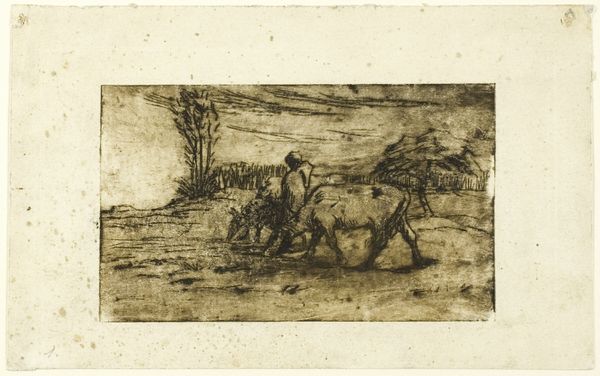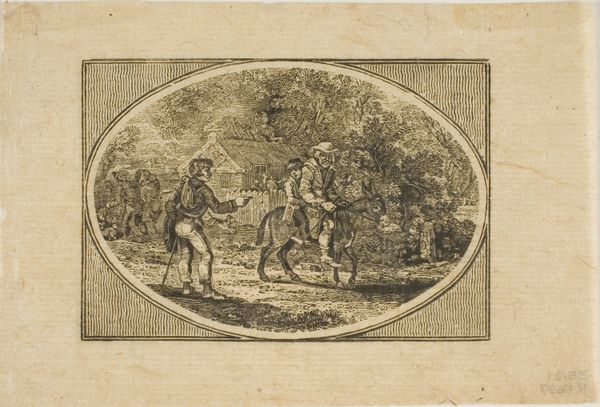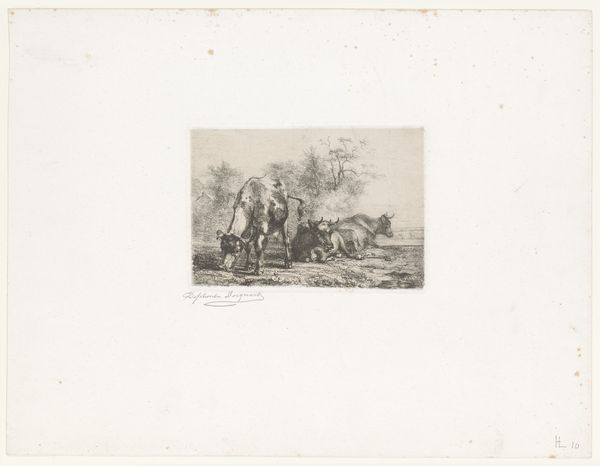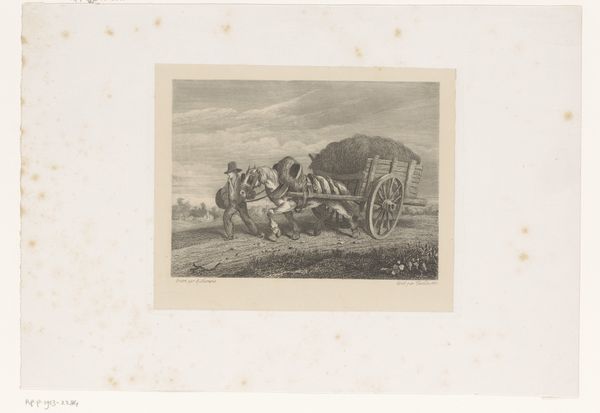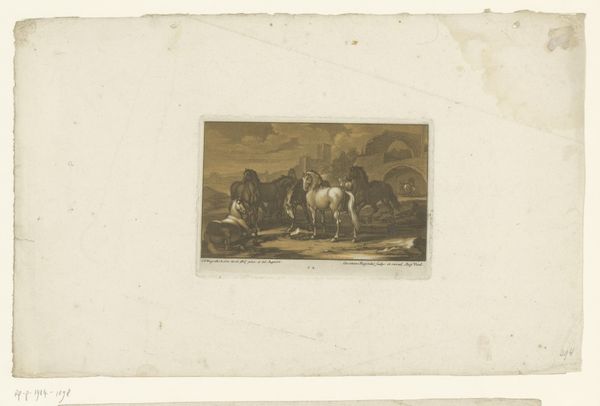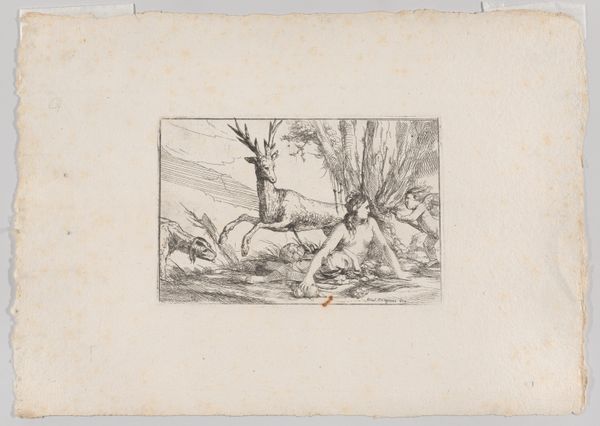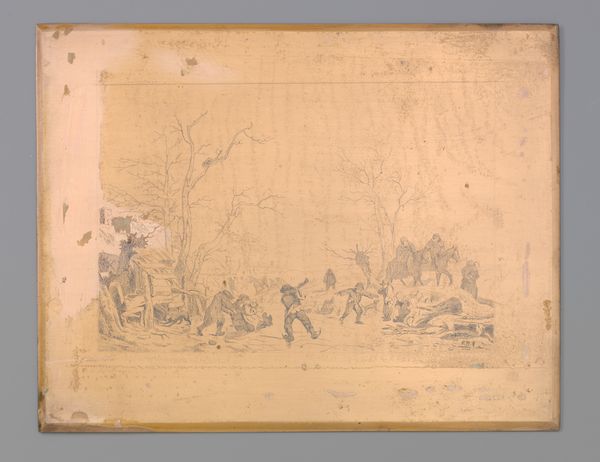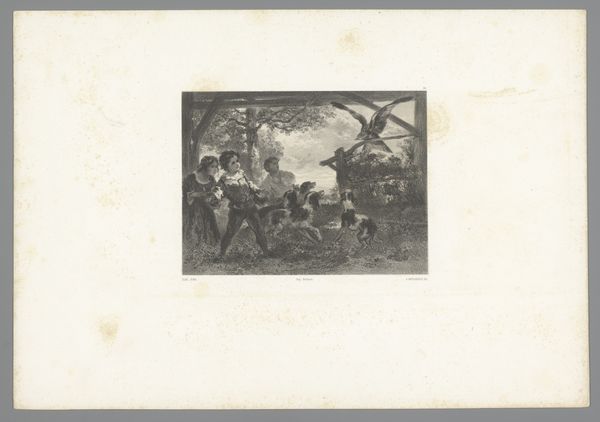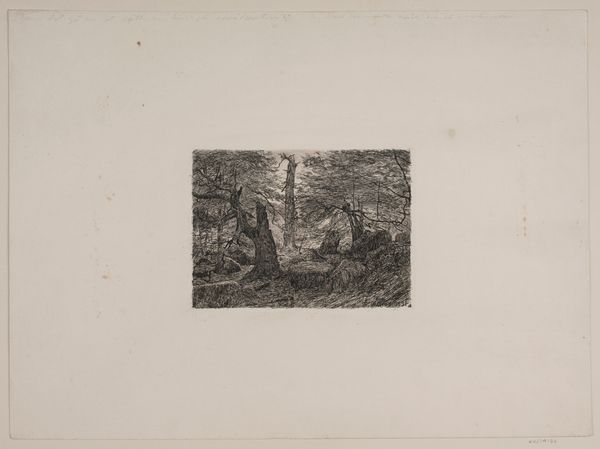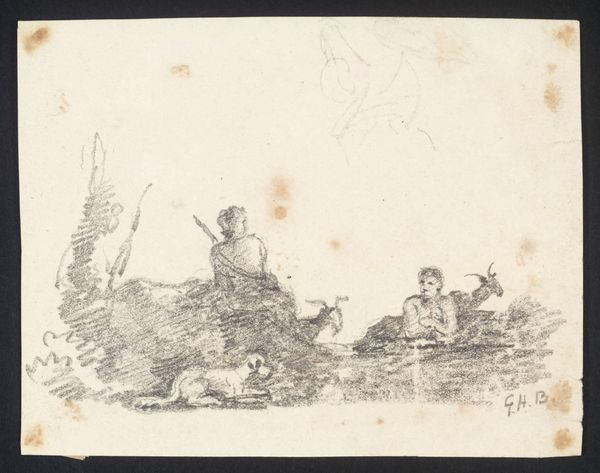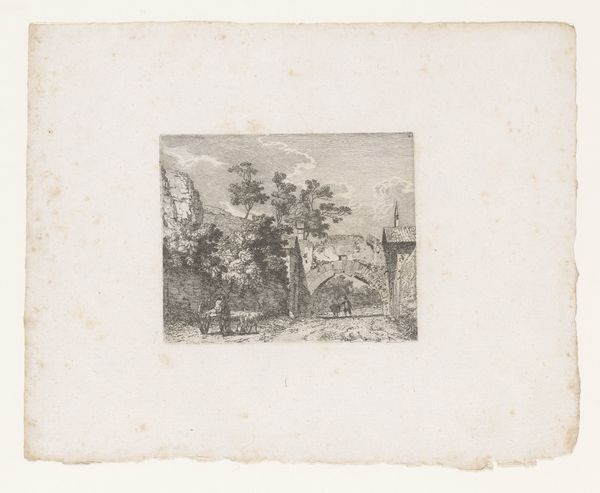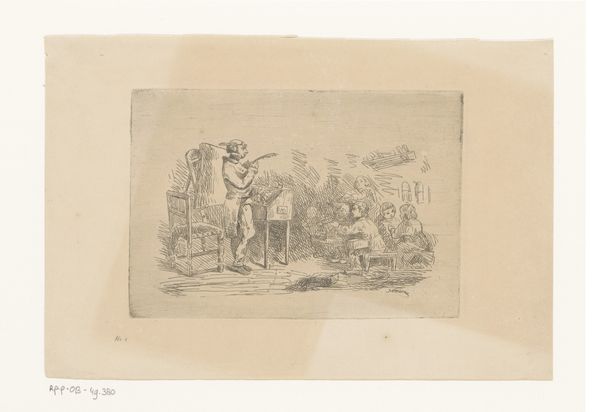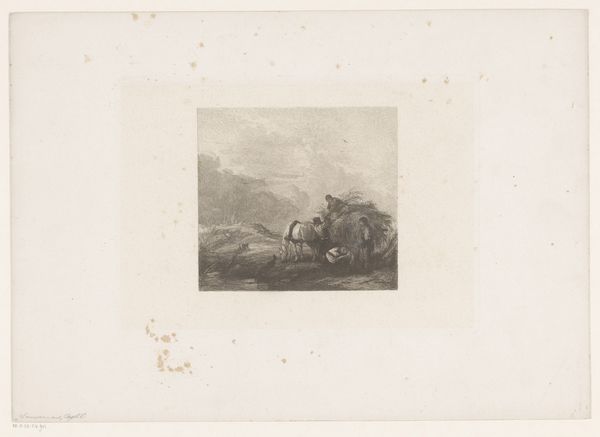
drawing, print, etching, paper, ink
#
drawing
# print
#
etching
#
landscape
#
paper
#
ink
#
romanticism
#
genre-painting
#
realism
Dimensions: 91 × 152 mm (image); 152 × 217 mm (sheet)
Copyright: Public Domain
Curator: Here we have Jean-François Millet’s “The Two Cows,” created around 1847. It’s an etching printed in ink on paper, currently residing here at The Art Institute of Chicago. Editor: It's... brown. A sepia dream. I feel like I'm looking at an old photograph found tucked away in grandma's attic. Kind of muted, quiet. And there's this lovely impressionistic feel despite being so small. Curator: It speaks to Millet's involvement with both Romanticism and the emerging Realist movement. While cows might seem a banal subject, their representation highlights the shift toward depicting everyday life and the rural experience with dignity. Considering France at this time, the peasantry was increasingly visible in political discourse. Editor: Cows as a symbol of political awakening? I dig it! I initially just thought, aw, cows. So earthy. But now, knowing that, I can see a weightiness to the scene. These animals, rendered with such deliberate strokes, suddenly become these representatives of labor and the land. I also think the faceless figures leading the cows matter, giving all of us a role to imagine ourselves. Curator: Indeed. Millet, though coming from a farming background himself, was careful about idealizing rural life. He wasn't presenting some nostalgic fantasy but acknowledging the back-breaking work inherent in agriculture. These “Two Cows”, and the individuals attending to them, signify the intersection between human labor and animal labor. Editor: And that single, gnarled tree in the background -- is it just me, or does it feel a bit like it's bearing witness to all of this? Like an old, silent observer? And those dark, scratchy clouds... they give the impression it may rain very soon. Curator: The composition invites such narratives. These details aren’t just about aesthetic embellishment; they place the scene within a particular socio-economic landscape. They underline how much weather determined existence for both human and animal populations in this period. Editor: It's pretty incredible how much depth and story can be packed into such a tiny, monochromatic image. Thanks to you, this unassuming cow parade is no longer just a pastoral scene to me. Now, it makes me consider the weight of rural life. Curator: It also highlights the enduring power of art to reveal these hidden connections and ask relevant social questions even now.
Comments
No comments
Be the first to comment and join the conversation on the ultimate creative platform.
